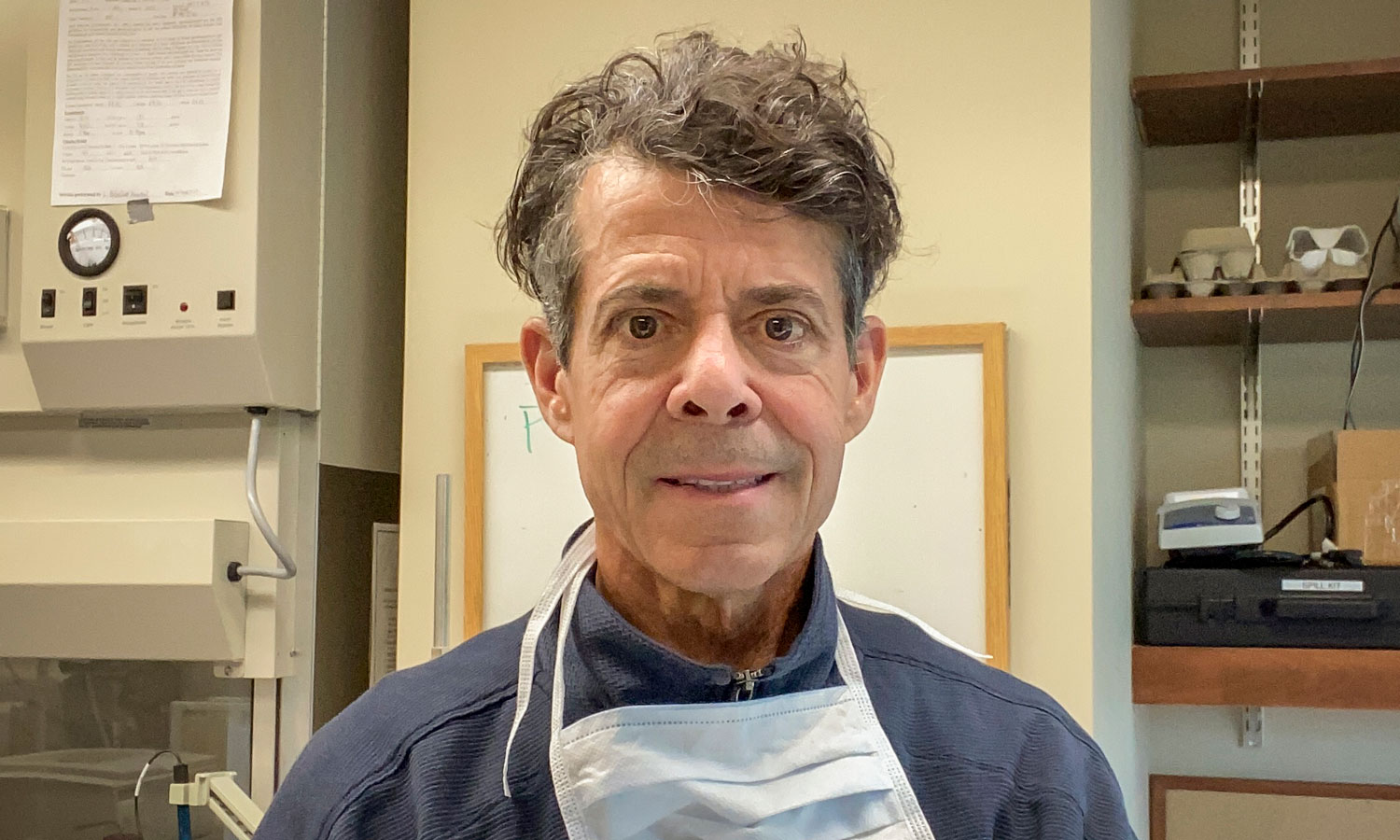As COVID-19 mutates to become more contagious, Michael Peters, Ph.D., is accelerating efforts to disable the “spikes” that give the coronavirus particle its familiar shape — and its power to prey on cells.
Peters, a professor of chemical and life science engineering at VCU, has been watching the behavior of the SARS-CoV-2 spike protein like a detective watching a suspect at large. With the emergence of the Delta variant, the criminal is craftier.
The virus uses the spike protein to latch on to human epithelial cells that line the lungs and vasculature. Peters likens this process to a burglar trying to break into a house.
“It’s a little like a lock and key mechanism. With the original Wuhan strain, the key didn't fit very well, so it had to jiggle and turn a couple of times before opening the door,” Peters said. “Delta is much more problematic, because, through the multitude of mutations that take place during infection and replication, the virus has stumbled onto a better key.”
The surface of the spike protein — or “key” — is composed of subunits called protomers. Each protomer is in an “up” or “down” state. Think of these states as grooves on the key. The “up” state appears to allow binding, while the “down” state is believed to be relatively inactive.
Therefore, forcing protomers into a “down” state may be a step toward future treatments for COVID-19. Last year, Peters led research at VCU to map the entire spike protein looking for glue points unique to the down state configuration. He also identified specific molecules or “residues” that may lock it down.
This summer, Peters published an analysis of the up-to-down states of SARS-CoV-2 variants and lineages. His research found that the emerging viral variants and its protomers appear to stay in an extended “up” state. This study also identified common glue points across variants and lineages, which could be critical in tracking future variants and lineages.
Peters has also been working with Hoth Therapeutics on a strategy to block spike protein binding using a novel peptide that mimics the way the virus binds to the cell’s surface. This peptide may stop the initial process of virus attachment and prevent transmission of SARS-CoV-2 throughout the body.
Peters urges people not to wait for a COVID treatment, however, which he said is risky and far in the future. “They can mitigate this virus now,” he said.
“We have a great vaccine in place, and everyone should get it. People should wear N95 or real filtration masks indoors and practice good environmental air ventilation. Children, especially, should be wearing N94 masks, which are best for children under 12 because the weave is not as tight [as in N95 masks] and make for better breathing,” he said.
Peters added that SARS-CoV-2 continues to mutate because of the large number of infections, and more transmissible, mutant viruses take over.
“The new variants, such as Delta, appear to be much more dangerous to children than the original strain,” he said. “We dodged a bullet with the first strains, as far as infections in children were concerned. Let’s not count on dodging another one,” he said.
